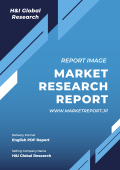目次
第1章 グローバルナフタレン誘導体市場レポートの範囲と方法論
1.1. 研究目的
1.2. 研究方法論
1.2.1. 予測モデル
1.2.2. デスク調査
1.2.3. トップダウンとボトムアップアプローチ
1.3. 研究属性
1.4. 研究の範囲
1.4.1. 市場定義
1.4.2. 市場セグメンテーション
1.5. 研究の仮定
1.5.1. 包含と除外
1.5.2. 制限事項
1.5.3. 調査対象期間
第2章 執行要約
2.1. CEO/CXOの視点
2.2. 戦略的洞察
2.3. ESG分析
2.4. 主要な発見
第3章 グローバルナフタレン誘導体市場動向分析
3.1. グローバルナフタレン誘導体市場を形作る市場要因(2024–2035)
3.2. 推進要因
3.2.1. 高性能な建設・インフラ材料の需要増加
3.2.2. 自動車および包装業界におけるナフタレン系可塑剤の採用拡大
3.3. 制約
3.3.1. 厳格な規制枠組みと環境規制の遵守障壁
3.3.2. 原材料価格の変動とサプライチェーンの混乱
3.4. 機会
3.4.1. 環境配慮型誘導体とグリーン化学のイノベーションの拡大
3.4.2. 新興国における産業活動の拡大と急速な都市化
第4章 グローバルなナフタレン誘導体産業分析
4.1. ポーターの5つの力モデル
4.1.1. 買い手の交渉力
4.1.2. 供給者の交渉力
4.1.3. 新規参入の脅威
4.1.4. 代替品の脅威
4.1.5. 競合企業の競争
4.2. ポーターの5つの力予測モデル(2024–2035)
4.3. PESTEL分析
4.3.1. 政治
4.3.2. 経済的
4.3.3. 社会
4.3.4. 技術的
4.3.5. 環境
4.3.6. 法的
4.4. 主要な投資機会
4.5. 主要な成功戦略(2025年)
4.6. 市場シェア分析(2024–2025)
4.7. グローバル価格分析と動向(2025年)
4.8. 分析家の推奨事項と結論
第5章. グローバルナフタレン誘導体市場規模と予測(2025–2035年)
5.1. 市場概要
5.2. グローバル市場パフォーマンス – 潜在分析(2025年)
5.3. フタル酸無水物
5.3.1. 主要国別内訳推計と予測(2024–2035)
5.3.2. 地域別市場規模分析(2025年~2035年)
5.4. 農薬
5.5. 染料
5.6. 可塑剤
5.7. レジン
5.8. 界面活性剤
第6章. ナフタレン誘導体の世界市場規模と予測(最終用途産業別)2025–2035
6.1. 市場概要
6.2. 建設
6.3. 自動車
6.4. 包装
6.5. 電気・電子
6.6. 医薬品
6.7. 個人用ケア
第7章. グローバルなナフタレン誘導体市場規模と予測(化学構造別)2025–2035
7.1. 市場概要
7.2. ナフタレンモノスルホン酸
7.3. ナフタレンジスルホン酸
7.4. ナフタレントリスルホン酸
7.5. ナフタレンテトラスルホン酸
第8章 グローバルナフタレン誘導体市場規模と予測(物理形態別)2025–2035
8.1. 市場概要
8.2. 液体
8.3. 粉末
8.4. 懸濁液
8.5. 顆粒
8.6. フレーク
第9章. グローバルなナフタレン誘導体市場規模と地域別予測(2025年~2035年)
9.1. 地域別市場概要
9.2. 主要なリーダー企業と新興国
9.3. 北米ナフタレン誘導体市場
9.3.1. アメリカ合衆国
9.3.1.1. 用途別市場規模と予測(2025–2035年)
9.3.1.2. 最終用途産業別市場規模と予測(2025~2035年)
9.3.2. カナダ
9.3.2.1. 用途別市場規模と予測(2025年~2035年)
9.3.2.2. 最終用途産業別市場規模と予測(2025年~2035年)
9.4. ヨーロッパのナフタレン誘導体市場
9.4.1. イギリス
9.4.2. ドイツ
9.4.3. フランス
9.4.4. スペイン
9.4.5. イタリア
9.4.6. その他のヨーロッパ
9.5. アジア太平洋地域ナフタレン誘導体市場
9.5.1. 中国
9.5.2. インド
9.5.3. 日本
9.5.4. オーストラリア
9.5.5. 韓国
9.5.6. アジア太平洋地域その他
9.6. ラテンアメリカナフタレン誘導体市場
9.6.1. ブラジル
9.6.2. メキシコ
9.7. 中東・アフリカナフタレン誘導体市場
9.7.1. アラブ首長国連邦
9.7.2. サウジアラビア
9.7.3. 南アフリカ
9.7.4. 中東およびアフリカその他の地域
第10章 競合分析
10.1. 主要な市場戦略
10.2. BASF SE
10.2.1. 当社概要
10.2.2. 主要な経営陣
10.2.3. 会社の概要
10.2.4. 財務実績(データ入手状況により異なります)
10.2.5. 製品/サービスポートフォリオ
10.2.6. 最近の動向
10.2.7. 市場戦略
10.2.8. SWOT分析
10.3. ハリバートン・カンパニー
10.4. クロダ・インターナショナル・プラシッド
10.5. ベイカー・ヒューズ・カンパニー
10.6. インパクト・フルイド・ソリューションズ
10.7. M&D インダストリーズ・オブ・ルイジアナ・インク
10.8. シュルンベルジェ・リミテッド
10.9. シェブロン・フィリップス・ケミカル・カンパニー
10.10. オビン・グループ
10.11. トリカン・ウェル・サービス・リミテッド
10.12. アクゾノーベル・エヌ・ブイ
10.13. ダウ・ケミカル・カンパニー
10.14. ソルベイ・S.A.
10.15. リヨンデルバセル・インダストリーズ・エヌ・ヴィ
10.16. ハンツマン・コーポレーション
10.12. アクゾノーベル・エヌ・ブイ
表の一覧
表1. グローバルナフタレン誘導体市場、レポートの範囲
表2. 地域別グローバル市場規模推計と予測(2024年~2035年)
表3. グローバル市場規模推計および予測(用途別)2024–2035
表4. グローバル市場規模推計と予測(最終用途産業別)2024–2035
表5. 化学構造別グローバル市場規模推計と予測(2024年~2035年)
表6. 物理形態別グローバル市場規模推計と予測(2024–2035年)
表7. 米国市場予測と推計、2024–2035
表8. カナダ市場規模推計と予測、2024–2035
表9. イギリス市場推定値と予測、2024–2035
表10. ドイツ市場推定値と予測、2024–2035
表11. フランス市場の見積もりおよび予測、2024–2035
表12. スペイン市場の見積もりおよび予測、2024–2035
表13. イタリア市場推定値と予測、2024–2035
表14. 欧州その他の地域市場推定値と予測、2024–2035
表15. 中国市場の見積もりおよび予測、2024–2035
表16. インド市場推定値と予測、2024–2035
表17. 日本市場の見積もりおよび予測、2024–2035
表18. オーストラリア市場の見積もりおよび予測、2024–2035
表19. 韓国市場の見積もりおよび予測、2024–2035
表20. アジア太平洋地域(その他)市場推定値と予測、2024–2035
表21. ブラジル市場の見積もりおよび予測(2024~2035年)
表22. メキシコ市場の見積もりおよび予測(2024~2035年)
表23. アラブ首長国連邦(UAE)市場推計と予測、2024–2035
表24. サウジアラビア市場の見積もりおよび予測、2024–2035
表25. 南アフリカ市場推定値と予測、2024–2035
表26. 中東・アフリカその他の地域市場推定値と予測、2024–2035
図表一覧
図1. グローバルナフタレン誘導体市場、研究手法
図2. グローバル市場推定手法
図3. グローバル市場規模推計および予測手法
図4. 2025年までのグローバル市場主要動向
図5. 2024~2035年のグローバル市場成長見通し
図6. グローバルナフタレン誘導体市場、ポーターの5つの力モデル
図7. グローバル市場、PESTEL分析
図8. グローバルナフタレン誘導体市場、バリューチェーン分析
図9. 用途別市場、2025年と2035年
図10. 市場用途別、2025年と2035年
図11. 化学構造別市場、2025年と2035年
図12. 物理形態別市場、2025年と2035年
図13. 北米市場、2025年と2035年
図14. 欧州市場、2025年と2035年
図15. アジア太平洋市場、2025年と2035年
図16. ラテンアメリカ市場、2025年と2035年
図17. 中東・アフリカ市場、2025年と2035年
図18. グローバル企業市場シェア分析(2025年)
Chapter 1. Global Naphthalene Derivatives Market Report Scope & Methodology
1.1. Research Objective
1.2. Research Methodology
1.2.1. Forecast Model
1.2.2. Desk Research
1.2.3. Top Down and Bottom-Up Approach
1.3. Research Attributes
1.4. Scope of the Study
1.4.1. Market Definition
1.4.2. Market Segmentation
1.5. Research Assumption
1.5.1. Inclusion & Exclusion
1.5.2. Limitations
1.5.3. Years Considered for the Study
Chapter 2. Executive Summary
2.1. CEO/CXO Standpoint
2.2. Strategic Insights
2.3. ESG Analysis
2.4. Key Findings
Chapter 3. Global Naphthalene Derivatives Market Forces Analysis
3.1. Market Forces Shaping The Global Naphthalene Derivatives Market (2024–2035)
3.2. Drivers
3.2.1. Rising demand for high-performance construction and infrastructure materials
3.2.2. Increased adoption of naphthalene-based plasticizers in the automotive and packaging sectors
3.3. Restraints
3.3.1. Stringent regulatory frameworks and environmental compliance barriers
3.3.2. Volatility in raw material pricing and supply chain disruptions
3.4. Opportunities
3.4.1. Growing use of eco-friendly derivatives and green chemistry innovations
3.4.2. Expansion of industrial activity in emerging economies and rapid urbanization
Chapter 4. Global Naphthalene Derivatives Industry Analysis
4.1. Porter’s 5 Forces Model
4.1.1. Bargaining Power of Buyer
4.1.2. Bargaining Power of Supplier
4.1.3. Threat of New Entrants
4.1.4. Threat of Substitutes
4.1.5. Competitive Rivalry
4.2. Porter’s 5 Force Forecast Model (2024–2035)
4.3. PESTEL Analysis
4.3.1. Political
4.3.2. Economical
4.3.3. Social
4.3.4. Technological
4.3.5. Environmental
4.3.6. Legal
4.4. Top Investment Opportunities
4.5. Top Winning Strategies (2025)
4.6. Market Share Analysis (2024–2025)
4.7. Global Pricing Analysis and Trends 2025
4.8. Analyst Recommendation & Conclusion
Chapter 5. Global Naphthalene Derivatives Market Size & Forecasts by Application 2025–2035
5.1. Market Overview
5.2. Global Market Performance - Potential Analysis (2025)
5.3. Phthalic Anhydride
5.3.1. Top Countries Breakdown Estimates & Forecasts, 2024–2035
5.3.2. Market size analysis, by region, 2025–2035
5.4. Pesticides
5.5. Dyes
5.6. Plasticizers
5.7. Resins
5.8. Surface Active Agents
Chapter 6. Global Naphthalene Derivatives Market Size & Forecasts by End-use Industry 2025–2035
6.1. Market Overview
6.2. Construction
6.3. Automotive
6.4. Packaging
6.5. Electrical and Electronics
6.6. Pharmaceuticals
6.7. Personal Care
Chapter 7. Global Naphthalene Derivatives Market Size & Forecasts by Chemical Structure 2025–2035
7.1. Market Overview
7.2. Naphthalene Monosulfonic Acids
7.3. Naphthalene Disulfonic Acids
7.4. Naphthalene Trisulfonic Acids
7.5. Naphthalene Tetrasulfonic Acids
Chapter 8. Global Naphthalene Derivatives Market Size & Forecasts by Physical Form 2025–2035
8.1. Market Overview
8.2. Liquid
8.3. Powder
8.4. Suspension
8.5. Granules
8.6. Flakes
Chapter 9. Global Naphthalene Derivatives Market Size & Forecasts by Region 2025–2035
9.1. Regional Market Snapshot
9.2. Top Leading & Emerging Countries
9.3. North America Naphthalene Derivatives Market
9.3.1. U.S.
9.3.1.1. Application breakdown size & forecasts, 2025–2035
9.3.1.2. End-use Industry breakdown size & forecasts, 2025–2035
9.3.2. Canada
9.3.2.1. Application breakdown size & forecasts, 2025–2035
9.3.2.2. End-use Industry breakdown size & forecasts, 2025–2035
9.4. Europe Naphthalene Derivatives Market
9.4.1. UK
9.4.2. Germany
9.4.3. France
9.4.4. Spain
9.4.5. Italy
9.4.6. Rest of Europe
9.5. Asia Pacific Naphthalene Derivatives Market
9.5.1. China
9.5.2. India
9.5.3. Japan
9.5.4. Australia
9.5.5. South Korea
9.5.6. Rest of Asia Pacific
9.6. Latin America Naphthalene Derivatives Market
9.6.1. Brazil
9.6.2. Mexico
9.7. Middle East and Africa Naphthalene Derivatives Market
9.7.1. UAE
9.7.2. Saudi Arabia
9.7.3. South Africa
9.7.4. Rest of Middle East & Africa
Chapter 10. Competitive Intelligence
10.1. Top Market Strategies
10.2. BASF SE
10.2.1. Company Overview
10.2.2. Key Executives
10.2.3. Company Snapshot
10.2.4. Financial Performance (Subject to Data Availability)
10.2.5. Product/Services Port
10.2.6. Recent Development
10.2.7. Market Strategies
10.2.8. SWOT Analysis
10.3. Halliburton Company
10.4. Croda International Plc.
10.5. Baker Hughes Company
10.6. Impact Fluid Solutions
10.7. M&D Industries of Louisiana, Inc.
10.8. Schlumberger Limited
10.9. Chevron Phillips Chemical Company
10.10. Aubin Group
10.11. Trican Well Service Ltd.
10.12. Akzo Nobel N.V.
10.13. Dow Chemical Company
10.14. Solvay S.A.
10.15. LyondellBasell Industries N.V.
10.16. Huntsman Corporation
*** 免責事項 ***
https://www.globalresearch.co.jp/disclaimer/











